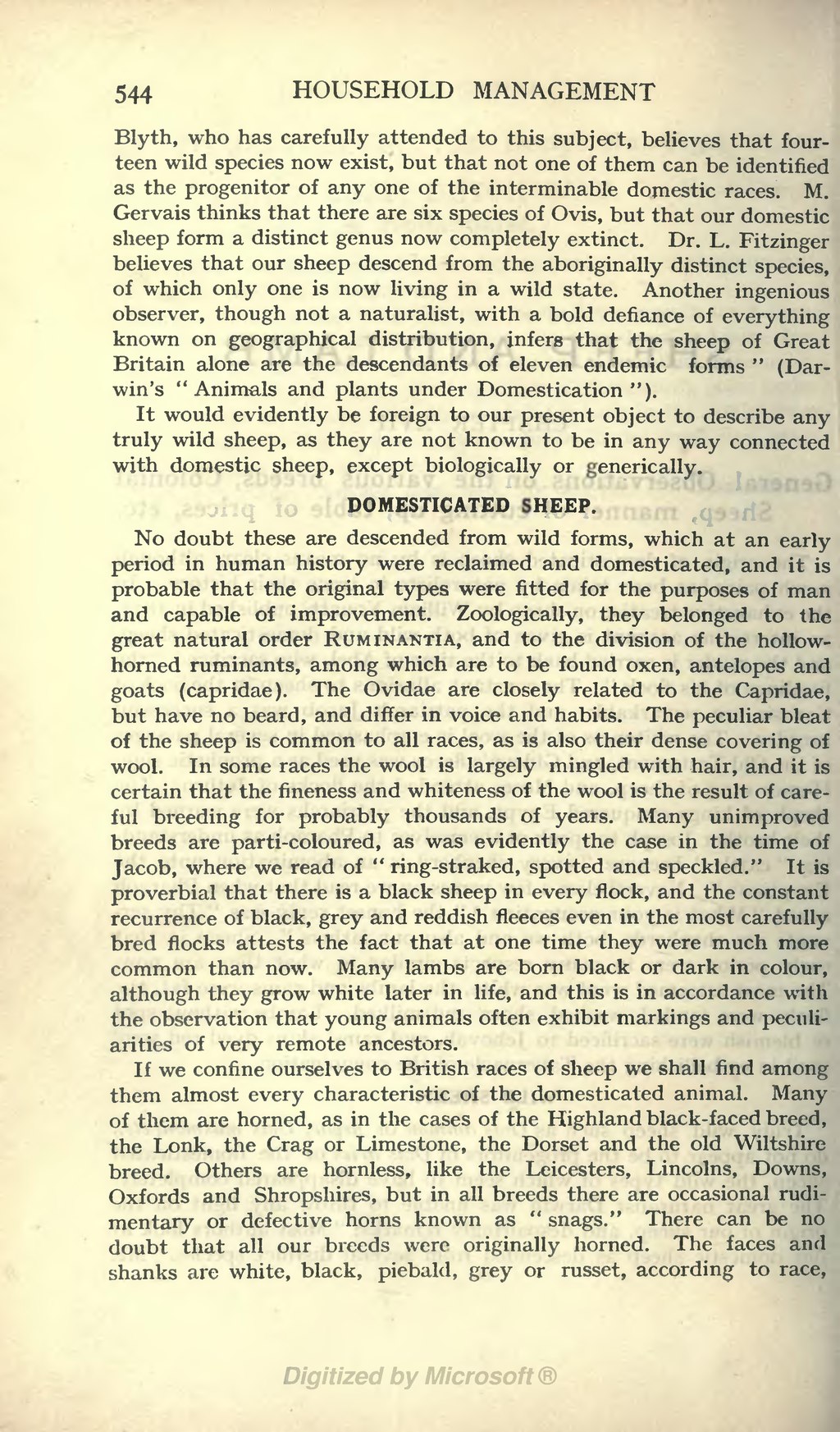Blyth, who has carefully attended to this subject, believes that fourteen wild species now exist, but that not one of them can be identified as the progenitor of any one of the interminable domestic races. M. Gervais thinks that there are six species of Ovis, but that our domestic sheep form a distinct genus now completely extinct. Dr. L. Fitzinger believes that our sheep descend from the aboriginally distinct species, of which only one is now living in a wild state. Another ingenious observer, though not a naturalist, with a bold defiance of everything known on geographical distribution, infers that the sheep of Great Britain alone are the descendants of eleven endemic forms" (Darwin's "Animals and plants under Domestication").
It would evidently be foreign to our present object to describe any truly wild sheep, as they are not known to be in any way connected with domestic sheep, except biologically or generically.
DOMESTICATED SHEEP.
No doubt these are descended from wild forms, which at an early period in human history were reclaimed and domesticated, and it is probable that the original types were fitted for the purposes of man and capable of improvement. Zoologically, they belonged to the great natural order Ruminantia, and to the division of the hollow–horned ruminants, among which are to be found oxen, antelopes and goats (capridae). The Ovidae are closely related to the Capridae, but have no beard, and differ in voice and habits. The peculiar bleat of the sheep is common to all races, as is also their dense covering of wool. In some races the wool is largely mingled with hair, and it is certain that the fineness and whiteness of the wool is the result of careful breeding for probably thousands of years. Many unimproved breeds are parti-coloured, as was evidently the case in the time of Jacob, where we read of "ring-straked, spotted and speckled." It is proverbial that there is a black sheep in every flock, and the constant recurrence of black, grey and reddish fleeces even in the most carefully bred flocks attests the fact that at one time they were much more common than now. Many lambs are born black or dark in colour, although they grow white later in life, and this is in accordance with the observation that young animals often exhibit markings and peculiarities of very remote ancestors.
If we confine ourselves to British races of sheep we shall find among them almost every characteristic of the domesticated animal. Many of them are horned, as in the cases of the Highland black-faced breed, the Lonk, the Crag or Limestone, the Dorset and the old Wiltshire breed. Others are hornless, like the Leicesters, Lincolns, Downs, Oxfords and Shropshires, but in all breeds there are occasional rudimentary or defective horns known as "snags." There can be no doubt that all our breeds were originally horned. The faces and shanks are white, black, piebald, grey or russet, according to race,
